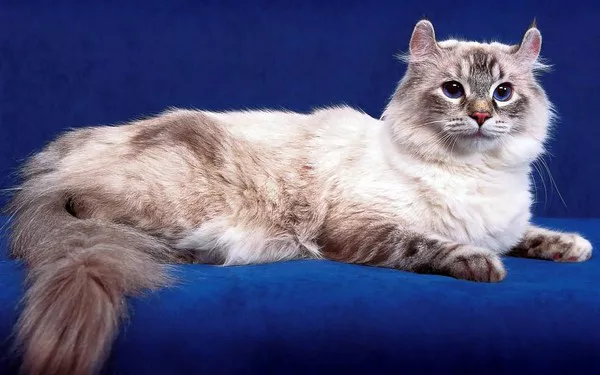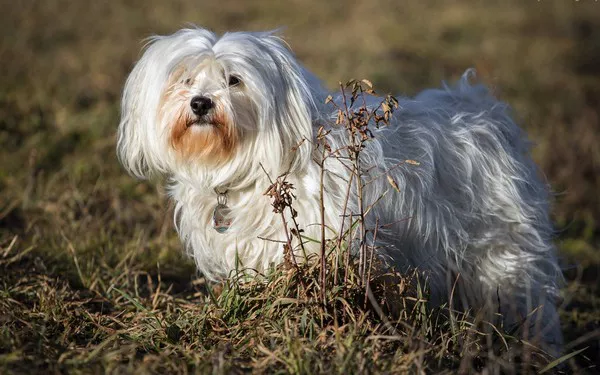The American Curl, a breed known for its distinctive curled ears and affectionate nature, is a beloved companion for many. To keep your American Curl healthy and happy, providing a well-balanced diet is crucial. Understanding the nutritional needs of this unique breed can help you make informed decisions about their diet. This article will explore the best feeding practices for American Curls, from basic nutritional needs to specialized dietary considerations.
Understanding the American Curl’s Nutritional Needs
Before diving into specific feeding guidelines, it’s important to understand the fundamental nutritional requirements for American Curls. Like all cats, their diet should be tailored to support their overall health, maintain a healthy weight, and address any specific needs related to their breed.
Basic Nutritional Requirements
American Curls, as a breed, do not have significantly different nutritional needs compared to other domestic cats. However, understanding their basic dietary requirements is essential for their well-being.
Protein
Cats are obligate carnivores, meaning their bodies are designed to derive most of their nutrients from animal-based proteins. High-quality protein sources support muscle maintenance, energy levels, and overall health. Ideal protein sources include chicken, turkey, beef, and fish.
Fats
Fats are a crucial component of a cat’s diet, providing energy and supporting skin and coat health. Omega-3 and omega-6 fatty acids are particularly important. These can be found in fish oils and certain plant oils, contributing to a shiny coat and healthy skin.
Carbohydrates
While cats do not have a high requirement for carbohydrates, a small amount can be beneficial. Carbohydrates provide a source of energy and help with gastrointestinal health. Opt for easily digestible sources like pumpkin or sweet potatoes.
Vitamins and Minerals
A balanced diet should also include essential vitamins and minerals. Vitamins A, D, and E, along with minerals like calcium and phosphorus, are vital for various bodily functions, including bone health and immune system support.
Choosing the Right Type of Cat Food
Selecting the appropriate type of cat food for your American Curl involves considering various factors, including their age, health status, and dietary preferences. There are several types of cat food available, each with its own benefits and considerations.
Dry Cat Food
Dry cat food, or kibble, is a popular choice for many cat owners due to its convenience and long shelf life. It is also beneficial for dental health, as the crunchy texture helps reduce tartar buildup.
Advantages
Convenience: Easy to store and serve.
Dental Health: Helps clean teeth and reduce tartar.
Cost-Effective: Generally less expensive than wet food.
Considerations
Hydration: Ensure your cat drinks enough water, as dry food contains less moisture.
Quality: Choose high-quality brands with meat as the primary ingredient and avoid fillers.
Wet Cat Food
Wet cat food, or canned food, provides higher moisture content, which can be beneficial for cats who do not drink enough water.
Advantages
Hydration: Helps increase fluid intake.
Palatability: Often more appealing to picky eaters.
Digestibility: Generally easier on the digestive system.
Considerations
Storage: Requires refrigeration once opened.
Cost: Can be more expensive than dry food.
Raw and Homemade Diets
Some owners opt to feed their cats raw or homemade diets, believing these options to be more natural or healthier. However, these diets require careful planning to ensure they meet all of the cat’s nutritional needs.
Advantages
Control: Complete control over ingredients and quality.
Freshness: Use of fresh, whole foods.
Considerations
Nutritional Balance: Must be carefully balanced to meet all dietary requirements.
Preparation: Requires time and knowledge to prepare safely.
Special Dietary Needs for American Curls
While American Curls generally have similar nutritional needs to other cats, certain factors can affect their dietary requirements.
Age and Life Stage
Different life stages—kitten, adult, and senior—require different nutritional profiles.
Kittens
Kittens need a diet high in protein and fat to support their rapid growth and development. They also require higher levels of certain vitamins and minerals.
Adults
Adult cats require a balanced diet to maintain their health. Focus on providing high-quality protein and a moderate amount of fat.
Seniors
Senior cats may need diets tailored to address age-related issues such as arthritis or kidney disease. Look for food with added joint support or lower phosphorus levels, if recommended by your veterinarian.
Health Conditions
Certain health conditions may require dietary adjustments. Common issues in American Curls include dental health, obesity, and urinary tract health.
Dental Health
To support dental health, consider incorporating dry food and dental treats designed to reduce tartar and plaque.
Obesity
If your American Curl is overweight, opt for weight management formulas that provide fewer calories while still meeting nutritional needs.
Urinary Health
For cats prone to urinary tract issues, look for foods formulated to support urinary health, such as those with controlled magnesium levels and added moisture.
See Also: How Much Does an American Curl Cat Cost?
Implementing Feeding Guidelines
Once you understand your American Curl’s nutritional needs and the types of food available, you can establish a feeding routine that supports their health and well-being.
Portion Control
Feeding the right amount of food is crucial for maintaining a healthy weight. Follow the feeding guidelines provided on the cat food packaging and adjust portions based on your cat’s activity level, age, and health status.
Meal Frequency
Cats can be fed once or twice a day, depending on your preference and schedule. Some owners choose to provide free-feeding (leaving food out all day), while others prefer scheduled meals to monitor food intake.
Hydration
Ensure your American Curl has access to fresh water at all times. If feeding dry food, encourage water consumption by providing multiple water bowls or using a pet water fountain.
Treats and Supplements
Treats can be a part of a balanced diet but should be given in moderation. Avoid overfeeding treats, as they can contribute to weight gain. Supplements, such as omega fatty acids or joint support, should only be given if recommended by your veterinarian.
Monitoring Your Cat’s Health
Regularly monitoring your American Curl’s health can help ensure their diet is meeting their needs and identify any potential issues early.
Weight and Body Condition
Regularly check your cat’s weight and body condition. A healthy cat should have a visible waist and ribs that can be felt but not seen. Consult your veterinarian if you notice significant weight changes.
Coat and Skin Condition
A healthy diet should result in a shiny coat and healthy skin. If you notice changes in your cat’s coat or skin, it may indicate a nutritional deficiency or health issue.
Behavioral Changes
Changes in eating habits, such as loss of appetite or excessive hunger, can signal health problems. Monitor your cat’s behavior and consult your veterinarian if you have concerns.
Conclusion
Feeding your American Curl a balanced and nutritious diet is essential for their overall health and well-being. By understanding their basic nutritional needs and choosing the right type of food, you can help ensure they live a long, healthy, and happy life. Regular monitoring and adjustments based on their age, health status, and specific needs will further support their well-being. Remember to consult with your veterinarian for personalized advice and to address any concerns about your cat’s diet.
Related Topics:


























